When it comes to staying healthy, massage when sick can be a powerful tool. Massage can help to reduce stress, boost the immune system, and promote a sense of wellbeing. By leveraging the benefits of massage when sick, you can improve your overall wellbeing and help to ward off illnesses. In this article, we’ll discuss the potential benefits of massage when sick and how to make the most of them.
Contents
What is Massage?
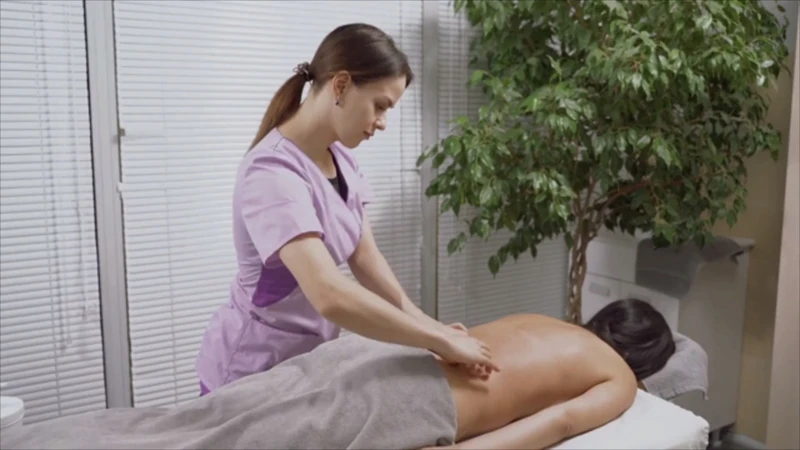
Massage is an ancient form of bodywork that uses a range of techniques to manipulate the soft tissue and muscles of the body. It is used to promote relaxation, improve circulation, reduce stress levels, increase flexibility, and relieve pain. Massage can be an effective way to reduce the symptoms associated with a cold and to improve overall wellbeing.
The most common types of massage are Swedish, deep tissue, and sports massage. Swedish massage involves long, gentle strokes to promote relaxation and improve circulation. Deep tissue massage uses more forceful pressure to target deep layers of muscle and connective tissue. Sports massage is designed to improve athletic performance and reduce the chance of injury.
Massage not only helps relieve the symptoms associated with a cold, but also helps to boost the immune system. This can help reduce the duration of a cold and reduce the chances of a relapse. Massage can also help reduce stress levels, which can help the body fight off infection.
When you have a cold, massage can be used to reduce congestion and muscle tension. Massage can also help reduce soreness and stiffness in the neck, shoulders, and back. In addition, massage can help reduce headaches, insomnia, fatigue, and other symptoms associated with a cold.
In conclusion, massage can be a powerful tool for improving your wellbeing when you have a cold. Massage can reduce symptoms, boost the immune system, and help to reduce stress levels. If you are looking for a way to leverage the benefits of massage when you have a cold, consider visiting a professional massage therapist.
Benefits of Massage
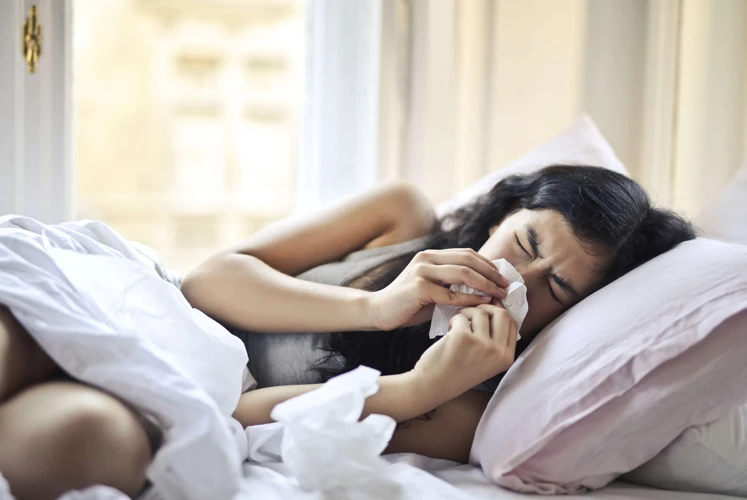
Physical Benefits
Massage therapy offers numerous physical benefits when practiced regularly. It can reduce tension and muscle pain, improve circulation and flexibility, reduce fatigue, increase energy, improve posture, and promote relaxation. Receiving massage when sick can help to reduce the severity of symptoms, especially if the massage is focused on the area of the body where symptoms are present.
Mental Benefits
In addition to the physical benefits, massage can also provide mental benefits when practiced regularly. It can reduce stress, improve concentration and alertness, help to improve sleep, and even reduce anxiety and depression. Receiving massage when sick can help to alleviate some of these symptoms and help to improve overall wellbeing.
The question of “is it bad to get a massage when sick” should be considered carefully. If the symptoms are mild and localized, massage can be beneficial. However, if the symptoms are severe or widespread, massage may not be the best choice. In this case, it is best to consult with a medical professional before receiving massage therapy.
Massage when sick
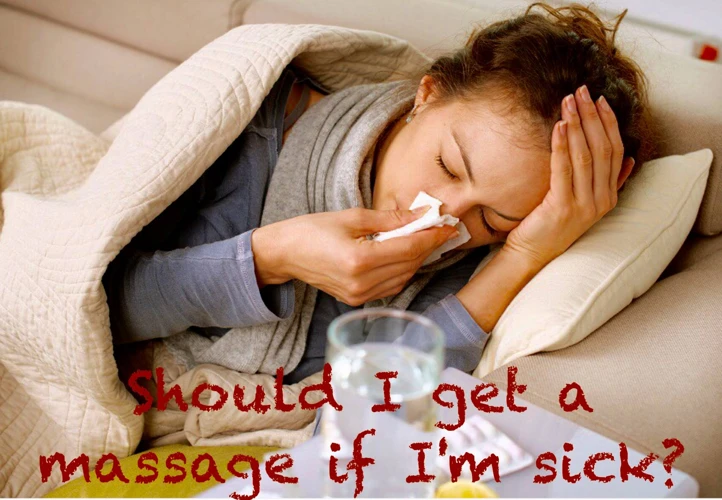
Is it bad to get a massage when sick?
No, it is not necessarily bad to get a massage when sick. In fact, massage therapy can be beneficial for helping to reduce stress, improve circulation, and boost the immune system. However, it is important to take into consideration the type of illness and the severity of the symptoms when deciding if a massage is appropriate.
Can you get a massage when you have a cold?
Yes, it is generally safe to get a massage when you have a cold. However, it is important to note that some massage techniques, such as deep tissue massage, can cause the immune system to become over-taxed, so it is best to avoid them if you are feeling under the weather. It is also important to let your massage therapist know if you are feeling any symptoms of a cold, such as a fever, so that they can adjust the pressure of the massage accordingly. In addition, it is important to ensure that the massage therapist is using proper hygiene and sanitation practices to prevent the spread of infection.
Types of Massage
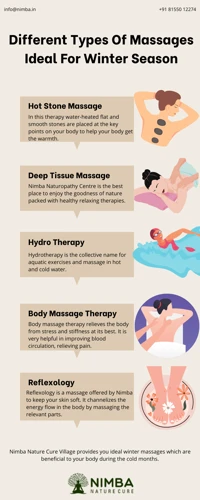
Swedish Massage
Swedish massage is a relaxing and invigorating massage technique which has been designed to improve circulation, reduce muscular tension and promote overall wellbeing. This type of massage incorporates long, flowing strokes, kneading, and deep finger pressure to target the deeper layers of muscle tissue.
Deep Tissue Massage
Deep tissue massage is a therapeutic massage technique that is used to release chronic tension and muscle knots. It involves deeper pressure than Swedish massage and can be used to target specific areas of tension. It is particularly beneficial for those who suffer from chronic pain or muscular stiffness.
Hot Stone Massage
Hot stone massage is a therapeutic massage technique that uses heated stones to provide relief from muscle tension and pain. The therapist will place the heated stones on specific areas of the body and massage them with a combination of kneading and pressure. This type of massage is especially beneficial for those who suffer from chronic pain, as the heat helps to reduce inflammation and muscle spasms.
Massage and Improved Wellbeing

Improved Immunity
Massage can help boost the body’s ability to fight off infection and disease. Studies have shown that regular massage can increase the production of white blood cells, which are needed to fight off germs and keep us healthy.
Reduced Stress
Massage can help reduce stress hormones in the body. During a massage, the body releases endorphins which act as natural painkillers, helping to reduce levels of stress hormones such as cortisol and adrenaline. In addition, massage can help to relax muscles and improve circulation, which can reduce stress and tension in the body.
Improved Sleep
Massage can help to improve the quality of sleep. Studies have shown that regular massage can help to increase serotonin levels in the body, which is needed for good quality sleep. Massage can also help to relax the body and mind, which can make it easier to fall asleep and stay asleep.
How to Find a Massage Therapist
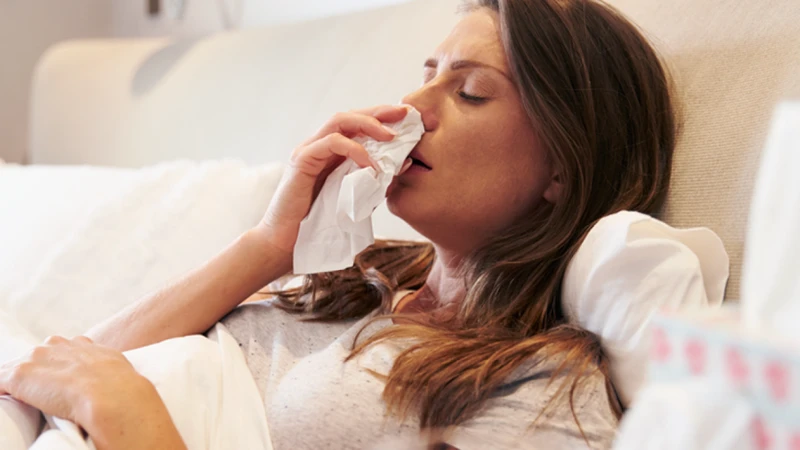
Finding a qualified massage therapist is essential to leveraging the benefits of massage while sick. Before booking a massage, it’s important to research massage therapists to ensure they are certified, experienced, and reputable. The following are some tips to help you find the right massage therapist for you:
Ask for Recommendations. Ask your friends, family, and acquaintances for recommendations. People who have had a great massage experience are typically willing to share the name of their massage therapist.
Check Credentials. It is important to check the credentials of any potential massage therapist. A qualified massage therapist should have a license from the state board of massage therapy. They should also have completed the necessary training and should be affiliated with a reputable organization.
Read Reviews. Check online reviews to get an idea of a massage therapist’s reputation. Reviews from past clients can provide valuable insight into their experience with the massage therapist.
Schedule a Consultation. Once you have narrowed down your list of potential massage therapists, contact them to schedule a consultation. A consultation is a great way to get to know the massage therapist and discuss your health needs.
Finding the right massage therapist can help you get the most out of your massage when sick. With some research, you can find the right massage therapist to help you feel better and improve your wellbeing.
Precautions when getting a Massage When Sick
When getting a massage while sick, it is important to take certain precautions to ensure the massage is beneficial and does not worsen your condition. Here are some key precautions to take:
Talk to your doctor – Before getting a massage, consult with your doctor to make sure it’s safe and beneficial for your condition.
Request a gentler massage – Ask your massage therapist to use a gentler touch and lighter pressure than they would during a regular massage.
Avoid certain areas – Avoid getting a massage on areas of your body where you are feeling pain or discomfort.
Stay hydrated – Drink plenty of water before, during, and after your massage to help flush toxins and reduce inflammation.
By following these precautions, you can make sure that your massage is both beneficial and safe while you are sick.
Frequently Asked Questions
What type of massage is best to use when feeling unwell?
• Swedish Massage:
-
- This is the most popular type of massage and is known for its gentle and relaxing strokes. It is a great option for easing tension and improving circulation which can help reduce inflammation.
• Deep Tissue Massage: This type of massage targets the deeper layers of muscle and tissue. It can help to relieve chronic pain and reduce inflammation throughout the body.
• Acupressure: Acupressure is a type of massage that uses pressure points on the body to stimulate healing. It can help to reduce inflammation and improve circulation throughout the body.
• Reflexology: This type of massage focuses on applying pressure to specific points on the feet. It is believed to stimulate the body’s natural healing process and can help to reduce inflammation.
• Shiatsu: Shiatsu is a type of massage that uses fingers and palms to apply pressure to specific areas of the body. It can help to reduce stress, improve circulation and reduce inflammation.
• Aromatherapy: Aromatherapy is a type of massage that uses essential oils to help relax the body and reduce inflammation. The essential oils used are believed to have healing properties that can help to reduce pain.
When feeling unwell, one should consider consulting a professional massage therapist to determine which type of massage is best for their needs. Massage can help to reduce inflammation, improve circulation, and relieve stress and pain. It is important to consult with a professional who can tailor the massage to the individual’s needs.
How Often Should Massage Be Used When Ill?
Massage should be used regularly when ill to help alleviate symptoms, reduce stress, and promote relaxation. Some people may find relief with just one massage, while others may need multiple sessions.
- For acute illnesses, massage should be used every two to three days until symptoms improve.
- For chronic illnesses, massage should be used every one to two weeks.
- For preventative care, massage can be used once a month to help maintain overall health.
It is important to discuss your needs with the massage therapist to ensure that the right massage techniques are used to address your specific condition. Massage should only be done when the body is not in an acute state. If there is fever, infection, or inflammation present, massage should be avoided until after it has subsided.
What are the Potential Side Effects of Massage When Feeling Unwell?
Massage can be beneficial when feeling unwell, however, there are potential side effects to be aware of. These may include: muscle soreness, fatigue, lightheadedness, increased sinus congestion, and skin irritation. It is also important to note that massage can cause an increase in symptoms if the person is dealing with an undiagnosed medical condition. Therefore, it is best to consult a doctor before engaging in massage when feeling unwell.
What are the Benefits of Massage for Improving Overall Wellbeing?
- Reduces stress and tension, relieving anxiety and depression.
- Improves circulation by increasing oxygen and nutrient delivery to the muscles.
- Enhances joint mobility by increasing flexibility and range of motion.
- Relieves muscle tension and spasms, relieving neck, shoulder and back pain.
- Boosts immunity by stimulating the lymphatic system, which helps the body rid itself of toxins and bacteria.
- Increases energy by stimulating the release of endorphins, the body’s natural painkillers.
- Promotes relaxation by calming the nervous system and inducing a sense of well-being.
What techniques can be used to maximize the benefits of massage when sick?
- Swedish Massage – This is a classic massage technique that is designed to improve circulation, reduce stress and tension, and promote relaxation. It uses gentle, long strokes to stimulate the muscles, increase blood flow, and improve lymphatic drainage.
- Deep Tissue Massage – This technique is used to address chronic muscle pain and tension. It involves using firm pressure and slow strokes to reach deeper layers of muscle and connective tissue. This can help to reduce inflammation and stimulate the release of natural painkillers.
- Trigger Point Therapy – This technique involves applying pressure to specific points in the body that are believed to be associated with pain and tension. Applying pressure to these points can help to reduce tension and improve circulation in the affected area.
- Aromatherapy – This is a holistic approach that uses essential oils to help improve physical and emotional wellbeing. Essential oils are believed to have a variety of benefits, including reducing stress and anxiety, boosting the immune system, and alleviating pain and inflammation.
The techniques listed above can be used to maximize the benefits of massage when sick. It is important to remember that everyone reacts differently to massage, so it is important to communicate with the massage therapist to ensure that the technique used is tailored to your individual needs and preferences.
Conclusion
Receiving a massage when sick can be an effective way to help manage symptoms and support the body’s natural healing process. Massage can reduce stress, improve circulation, and help alleviate pain and discomfort, allowing the body to rest and recover. With a variety of massage techniques available, there’s sure to be one that can help improve wellbeing when feeling under the weather.

